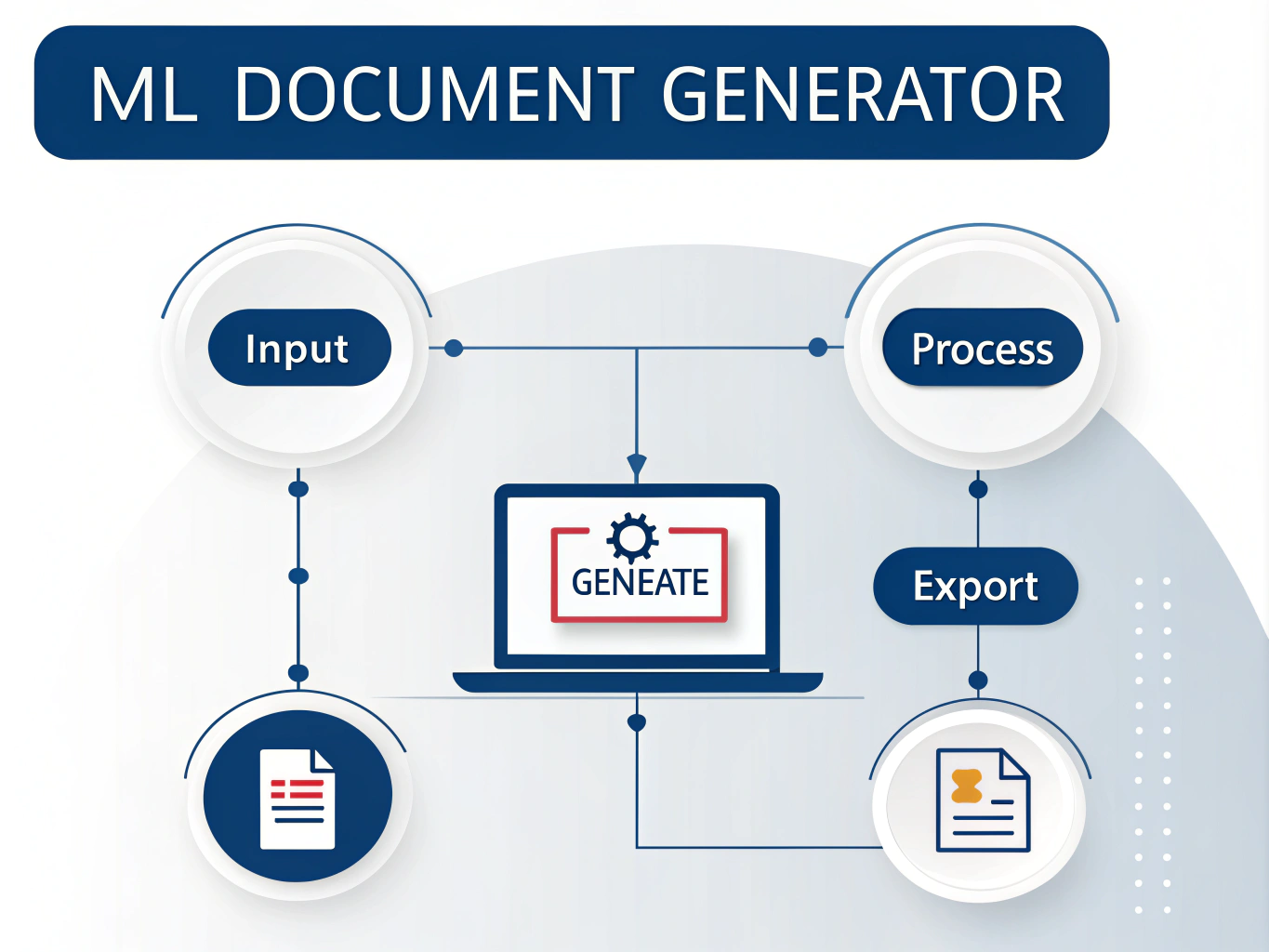Is this tool helpful?
How to Use the Machine Learning Document Generator Effectively
This tool helps you create detailed Microsoft Word documents based on inputs related to machine learning projects. To make the most of it, complete the fields with clear, focused information. Here’s how to fill each section with practical examples different from the default placeholders:
-
Technical Summary: Provide a brief but precise overview of the machine learning concepts or techniques you want to document.
Example inputs:
- “This book covers deployment strategies for scalable deep learning models, including API integration and model versioning.”
- “Focuses on automated feature engineering and hyperparameter tuning in large-scale machine learning systems.”
-
Customer Excellence Function: Indicate the customer-related goal or business function your case example targets.
Example inputs:
- “Dynamic Pricing Optimization”
- “Customer Sentiment Analysis”
-
Technical Tools: List the technologies, frameworks, or libraries involved in your case, separated by commas.
Example inputs:
- “PyTorch, Airflow, MLflow”
- “Hadoop, Kafka, LightGBM”
-
Data Information: Describe the relevant data sources, structures, and any key characteristics related to your project.
Example inputs:
- “Customer transaction logs combined with real-time web clickstream data over the past six months.”
- “Sensor data streams from IoT devices with temporal attributes and missing value handling.”
-
Technical Description: Explain your data pipelines, algorithms, and methods in detail.
Example inputs:
- “Implemented a multi-stage pipeline using batch data preprocessing followed by a gradient boosting model with feature importance analysis.”
- “Designed a neural network with attention mechanisms for sequence classification, including model tuning and continuous integration.”
- Generate Document: Click the button to create a tailored Word document capturing your inputs in a professional, technical format.
Once submitted, you can review the generated document immediately. Copy the content for sharing or further editing in your preferred word processor.
Introduction to the Machine Learning Technical Document Generator
This document generator simplifies the creation of detailed reports that combine your inputs with the foundational concepts from the book Machine Learning in Production by Andrew Kelleher and Adam Kelleher. It’s designed for data practitioners who need to produce consistent, clear, and comprehensive documentation for real-world machine learning projects focused on customer excellence.
Purpose and Key Benefits
The tool bridges the gap between theory and practical application, helping you:
- Save time: Automate technical report writing, allowing you to focus on model development.
- Maintain consistency: Use a standardized structure for clearer communication across teams.
- Enhance knowledge sharing: Produce understandable documents for both technical users and stakeholders.
- Customize output: Tailor reports to specific customer excellence functions or project needs.
- Improve clarity: Include visual elements and detailed technical explanations for complex processes.
Practical Applications of the Document Generator
This generator suits a wide range of industries and machine learning use cases by producing technically rich documents that illustrate your project’s approach and outcomes. Here are some examples to spark your ideas:
1. Retail Sector: Inventory Demand Forecasting
- Technical summary describing time-series forecasting models such as ARIMA or LSTM networks.
- Data description covering historical sales data and promotions.
- Explanation of data preprocessing, feature selection, and model evaluation metrics.
- Visual workflow of the forecasting pipeline including data ingestion and batch prediction scheduling.
2. Telecommunications: Network Fault Prediction
- Details on streaming data collection from network sensors and event logs.
- Use of anomaly detection algorithms combined with recurrent neural networks.
- Model deployment strategies with real-time alerting systems.
- Illustrations of monitoring dashboards and feedback loops for retraining.
3. Manufacturing: Predictive Maintenance
- Summary of sensor fusion techniques and failure prediction models.
- Data description encompassing equipment usage logs, vibration analysis, and environmental conditions.
- Technical methodology including feature extraction and predictive modeling pipelines.
- Visual representations of integration with IoT platforms and maintenance scheduling.
How This Tool Supports Your Machine Learning Projects
The document generator addresses several common challenges when implementing machine learning in production:
Bridging Theory and Real-World Practice
You provide the project specifics; the tool structures a document blending theoretical concepts with practical steps. For example, specifying “Churn Prediction Model” guides the generator to produce sections on algorithm choice, data needs, and deployment strategies tailored to that use case.
Improving Technical Communication
Complex machine learning workflows become easier to explain to technical teams, product owners, and business managers through generated reports that clarify processes, highlight business impact, and standardize terminology.
Ensuring Reproducibility and Maintenance
Detailed documentation of data sources, preprocessing steps, model architectures, and monitoring procedures helps future team members reproduce results, update models, and maintain robust production systems.
Meeting Regulatory and Compliance Requirements
In regulated industries, documenting fairness, interpretability, testing, and validation details is crucial. The generated reports include these elements based on your inputs, facilitating audits and compliance reviews.
Accelerating Onboarding and Knowledge Transfer
New data scientists or engineers get up to speed faster with structured, comprehensive documents that summarize project goals, data characteristics, technical methods, and business context all in one place.
Important Disclaimer
The calculations, results, and content provided by our tools are not guaranteed to be accurate, complete, or reliable. Users are responsible for verifying and interpreting the results. Our content and tools may contain errors, biases, or inconsistencies. Do not enter personal data, sensitive information, or personally identifiable information in our web forms or tools. Such data entry violates our terms of service and may result in unauthorized disclosure to third parties. We reserve the right to save inputs and outputs from our tools for the purposes of error debugging, bias identification, and performance improvement. External companies providing AI models used in our tools may also save and process data in accordance with their own policies. By using our tools, you consent to this data collection and processing. We reserve the right to limit the usage of our tools based on current usability factors.







